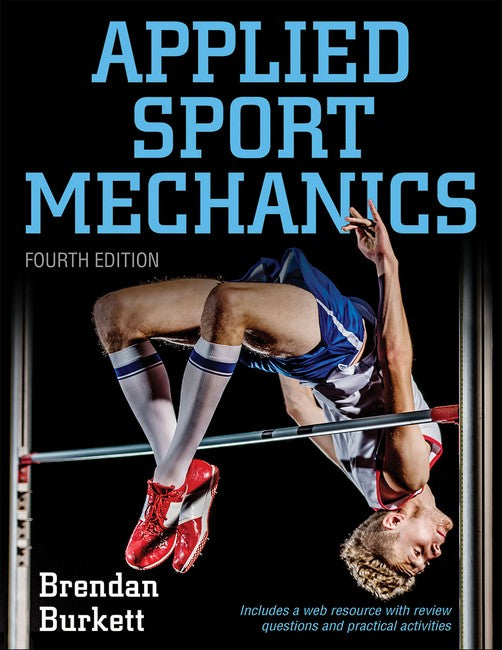Brendan Burkett is professor at the University of the Sunshine Coast, Queensland. He has written more than 150 peer-reviewed articles for journals in sport science, biomechanics and coaching. As an elite athlete, Burkett represented Australia for 13 years as a swimmer and was crowned Paralympic Champion and World Champion. He has also worked as the sport scientist for the Australian Paralympic team for the last four Paralympic Games.
Request Academic Copy
Please copy the ISBN for submitting review copy form
Description
Part I. Foundations of Movement in Sports Chapter 1. Introduction to Applied Sport Mechanics How Applied Sport Mechanics Is Organized What Is Sport Mechanics? Understanding and Quantifying Technique Summary Key Terms References Chapter 2. Sport Mechanics Anatomy Standard Anatomical Reference Terminology Connection Between Human Anatomy and Sport Mechanics Summary Key Terms References Chapter 3. Sport Mechanics Fundamentals How to Describe Human Motion Applying Sport Mechanics to Resistance Training Measurement and Evaluation in Sport Mechanics Summary Key Terms References Chapter 4. Linear Motion in Sport Linear Motion Measures (Speed, Velocity, and Acceleration) Linear Motion for Projectiles Summary Key Terms References Chapter 5. Linear Kinetics in Sport Fundamental Principles of Linear Kinetics Momentum and Impulse in Sport How to Measure Linear Kinetics: Running Gait Summary Key Terms References Chapter 6. Angular Motion in Sport Fundamental Principles of Angular Motion Applied Angular Motion: How an Athlete Initiates Rotation Summary Key Terms References Chapter 7. Angular Kinetics in Sport Gravity: Fundamental Principle of Angular Kinetics Angular Momentum Summary Key Terms References Chapter 8. Stability and Instability Fundamental Principles for Stability Mechanical Principles for Stability Factors That Increase Stability How to Measure Center of Gravity and Line of Gravity for an Athlete Summary Key Terms References Chapter 9. Sport Kinetics Work Power Energy Rebound Friction Summary Key Terms References Chapter 10. Moving Through Fluids Fundamental Principles of Moving Through Fluids Hydrostatic Pressure and Buoyancy Drag and Lift Factors That Influence Moving Through Air and Water Summary Key Terms References Part II. Putting Your Knowledge of Sport Mechanics to Work Chapter 11. Analyzing Sport Skills Step 1: Determine the Objectives of the Skill Step 2: Note Any Special Characteristics of the Skill Step 3: Study Top-Flight Performances of the Skill Step 4: Divide the Skill Into Phases Step 5: Divide Each Phase Into Key Objectives Step 6: Understand the Mechanical Reasons Each Key Element Is Performed as It Is Summary Key Terms References Chapter 12. Identifying and Correcting Errors in Sport Skills Step 1: Observe the Complete Skill Step 2: Analyze Each Phase and Its Key Elements Step 3: Use Your Knowledge of Sport Mechanics in Your Analysis Step 4: Select Errors to Be Corrected Step 5: Decide on Appropriate Methods for the Correction of Errors Summary Key Terms References Chapter 13. Selected Sport Skills Sprinting Jumping Wheelchair Sports Throwing Striking and Batting Swinging and Rotating Weightlifting Combat Throwing Tackle in Football Swimming Kicking a Ball Paddling a Watercraft References Appendix. Units of Measurement and Conversions

